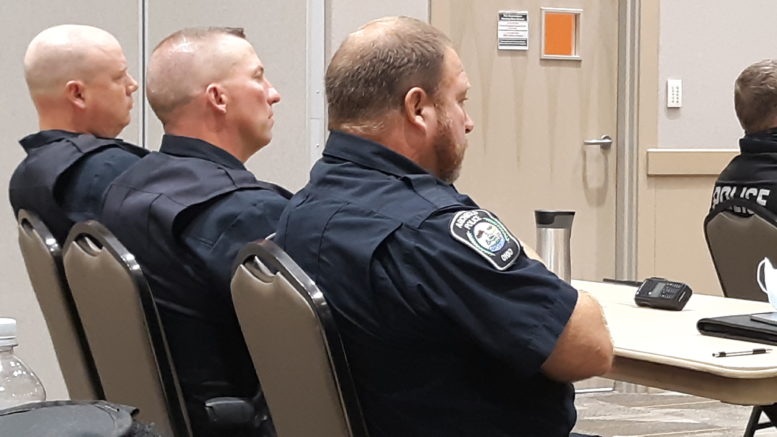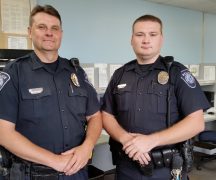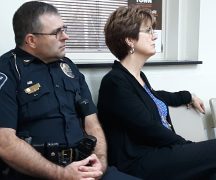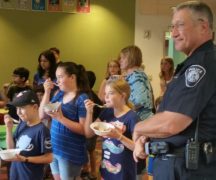By JAN LARSON McLAUGHLIN
BG Independent News
In the midst of a mass shooting or violent protest, law enforcement is laser focused on stopping the situation.
But once the gunfire ceases and crowds disperse, there are lessons to be learned.
On Thursday, 123 law enforcement officers and 50 students attended a seminar at Bowling Green State University on responses to mass violence and mass protests.The seminar, arranged by the Ohio Attorney General’s Office, was led by Frank Straub, of the National Police Foundation.
Such trainings are necessary with violence intensifying in the U.S., Straub said.
“We live in a very unsettled world – in my perspective, a very scary world,” he said, noting the frequency and severity of mass violence. “It has been and continues to be a problem in the U.S.”
The training was heavy on images of mass shooting incidents, and audio of police radio communications during the chaos. Then Straub would discuss the lessons learned after the heat of the incidents.
The first was the workplace shooting at a public health department in San Bernardino, California, in 2015. In that case, a husband and wife killed 16 people, and attempted to detonate an explosive device. They were killed a few hours later during a shootout with police.
In the initial chaos, when officers don’t know if the suspects are still at the scene, and as they rush to help victims, mistakes are inevitable. But they don’t have to be repeated at the next incident, Straub said.
The lessons learned from San Bernardino include:
- The first people on the scene are usually not the tactical officers, who have ballistic vests and guns to engage shooters. “It’s going to be patrol officers. It’s going to be detectives.” Straub said all officers should be trained and equipped for such situations.
- Close to 100 officers arrived on the scene. “It seemed anybody who had a gun and badge was there,” he said. “Everybody wants to help.” But all the vehicles responding blocked the ingress and egress to the site, so ambulances couldn’t get close to the incident.
- All those officers responding, and the desire to get to victims quickly also make it difficult to preserve the crime scene, Straub said.
- Police need to train for incidents where survivors are hiding, barricaded in rooms. In the San Bernardino case, no one on the scene had the ability to override the lockdown system, so law enforcement had to break every door in their search for the suspects and survivors.
- Law enforcement also needs to train for secondary devices on a scene. In this case, the shooters left a bomb in a backpack at the scene. It never detonated, but in the chaos, it was hours before the backpack was even noticed.
- Communication is always an issue. There is never enough bandwidth and quite often the system crashes, Straub said.
Next, Straub talked about the Pulse Nightclub mass shooting in Orlando, Florida, in 2016, where 49 people were killed by one shooter. In that incident, the shooter barricaded himself in a restroom with hostages. He told police he had an explosive vest, and was also putting explosive vests on the hostages. Meanwhile, the survivors are texting law enforcement, families and friends. The nightclub was completely dark, making police response even more difficult.
The lessons learned after the incident was over included:
- Law enforcement needs to train with fire and EMS about how to reach victims as quickly as possible. In the Pulse case, there was not a rescue task force which trains firefighters to go into active scenes to help victims. “The firefighters said – we have to be able to go in and rescue people. Officers said – absolutely not. There is an active shooter and possible IEDs,” Straub said. (Bowling Green police and fire divisions have a trained rescue task force.)
- A decision was made to ram through the concrete wall at the nightclub to get to the suspect. But that decision was not shared with all the first responders on the scene, leading to confusion.
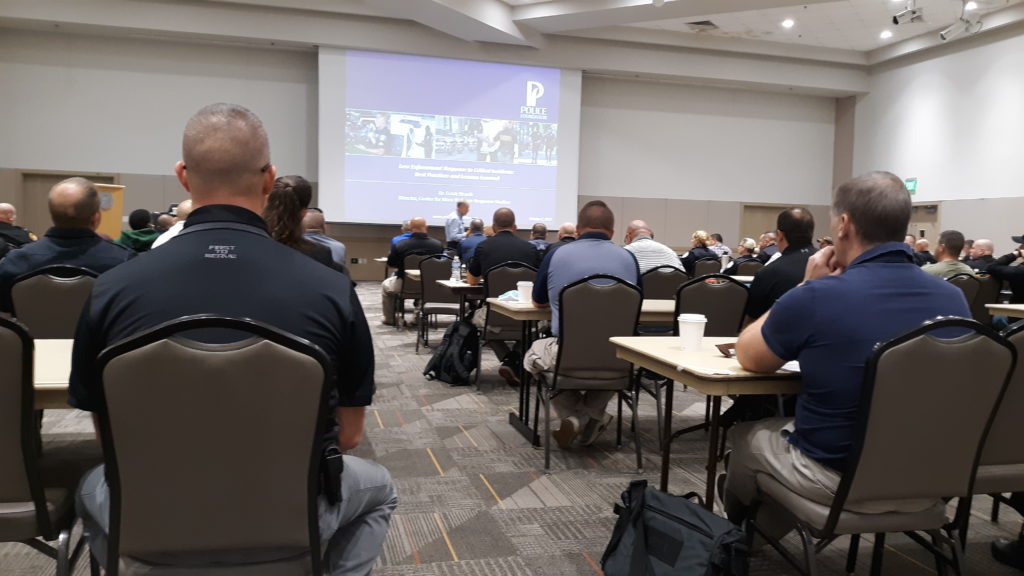
Straub talked about the need for a measured response to mass shooting scenes.
“So many of these kinds of events look like kids soccer,” with all the players rushing directly at the ball with no planning for the next possible step.
In both the Pulse and San Bernardino incidents, all area law enforcement responded to the scenes. “There was not one available unit within 50 to 60 miles,” Straub said.
“People are still having heart attacks. People are still having babies. People are still having car accidents,” he said.
“Sooner or later, somebody’s going to do a secondary attack and it’s going to work,” he said.
Different law enforcement agencies also need to plan ahead – together, Straub said.
“In the middle of a crisis is not the time to figure things out.”
And the planning must extend beyond the initial crisis. “It’s not over when the shooting stops,” he said. Training should cover processing the crime scene, providing emergency first aid, handling the deceased, notifying families, dealing with media, and working with hospitals that may be overwhelmed.
“Fortunately, this didn’t happen in the midst of COVID, when there aren’t any ICU beds,” Straub said.
School shootings often have further complications because emotions are running so high. Families need information as quickly as possible, he said.
“I’m gonna be raising holy hell because I want to know if my kid is alive.”
Straub stressed the need for mechanisms to help potentially violent students, he said.
In many cases with school shooters, there were indications of problems – signs on social media, signs of a history of violence, signs of kids obsessed with guns. It’s important that people who “see something – say something.”
“After they go to school to kill people it’s too late,” he said.
The training also addressed the protests across America in the wake of George Floyd’s murder and other police-involved shootings. Most large police forces had crowd management practices in place.
“The initial response was to do it as we always do,” Straub said.
But those practices did not work with the size and intensity of the protests, he said.
Lessons to be learned from those experiences included:
- In protests of the past, there were often easily identifiable leaders, who police and community leaders could meet with to discuss issues. These protests often had disparate groups.
- In some protests, the community officials and police officials took different stands on how the protests should be handled. “In the middle of chaos is not time to change tactics,” Straub said. In some cases, public officials criticized law enforcement trying to protect neighborhoods. “That sends a mixed message to the community.”
- According to Straub, the law enforcement message needs to be clear. “If you ramp up, we’re going to ramp up,” he said. “We don’t want to explain the use of force after force has been used.”
- The mental health of officers cannot be ignored – especially after the recent protests. “Not only were officers attacked on the skirmish lines,” but their homes and families were also targeted, Straub said. “You’ve got to take care of yourselves and take care of your colleagues.”
Lessons were also learned about the need for community engagement. The most recent protests were the result of years of unresolved issues and a crisis in trust, he said. Law enforcement has to be part of lowering the temperature.
“The embers were burning just below the surface. We have to sit across the table from people who hate our guts and listen to them,” Straub said.
Though most of last week’s training was a repeat for Bowling Green Police Division personnel in attendance, “it’s nice to have refresher,” said Major Justin White.
BGPD has an emergency operations plan with mandated annual training, a rescue task force with the fire division, and frequent trainings with BGSU and the local schools.
White mentioned the bomb threat at Bowling Green schools last month, and the police division’s efforts to keep parents informed.
“As a parent you want to know what’s going on, and if your kids are OK,” he said.

